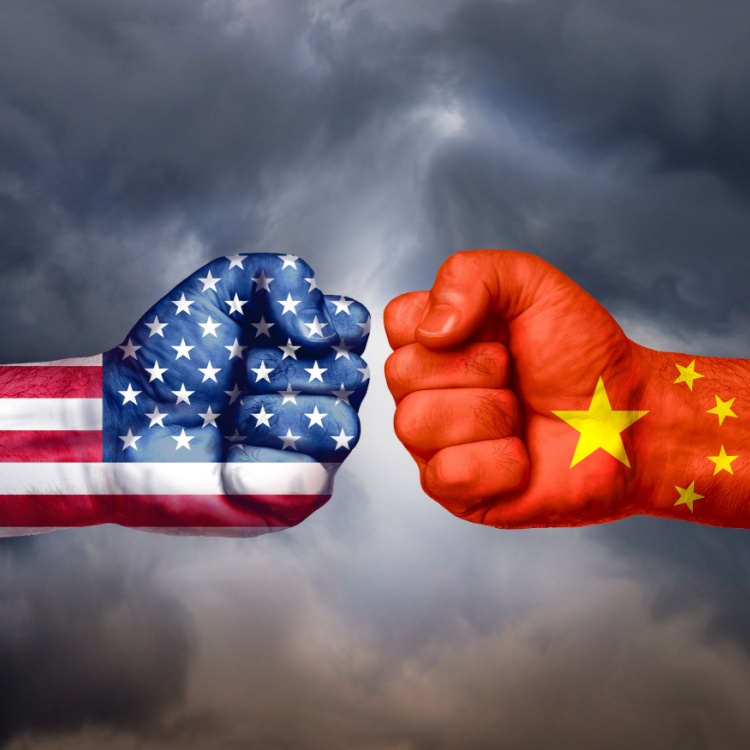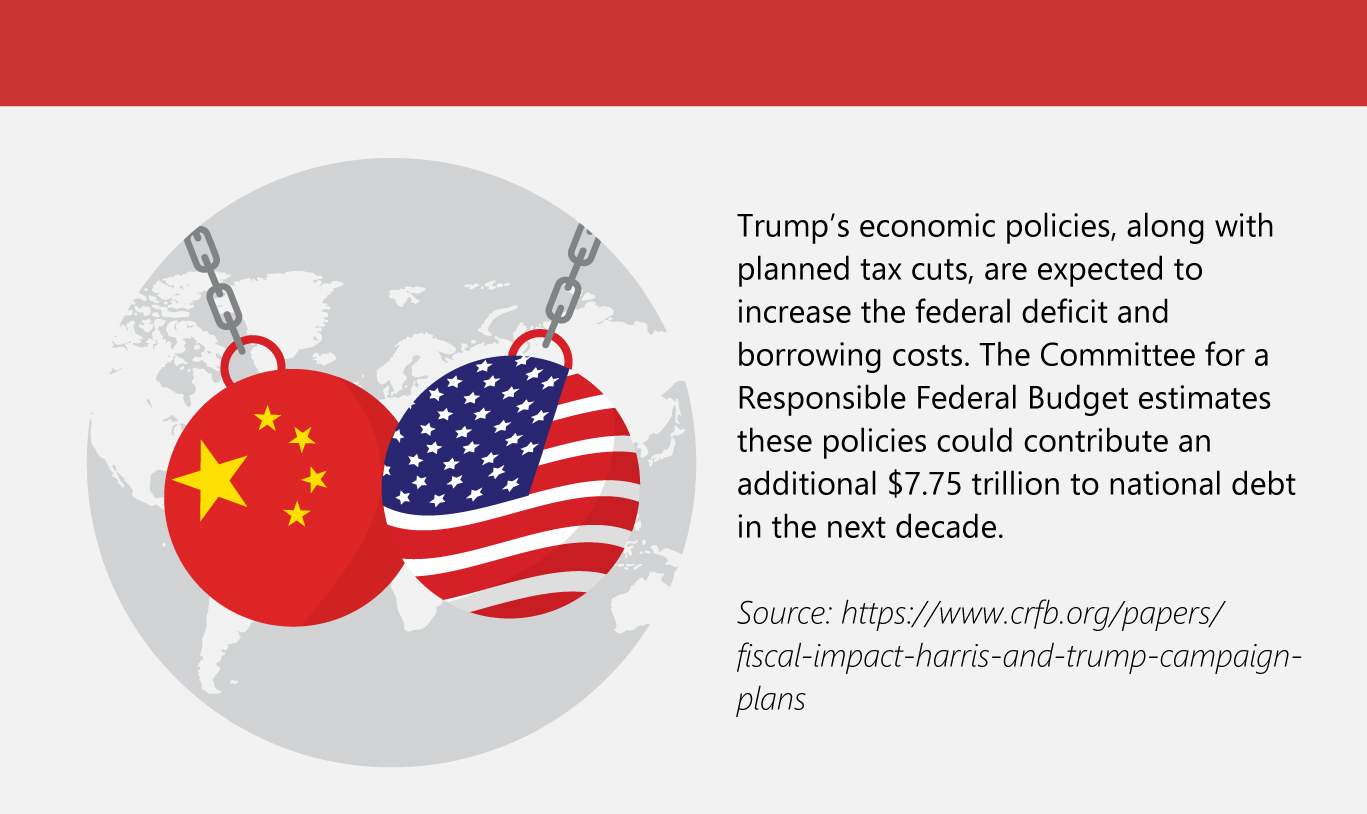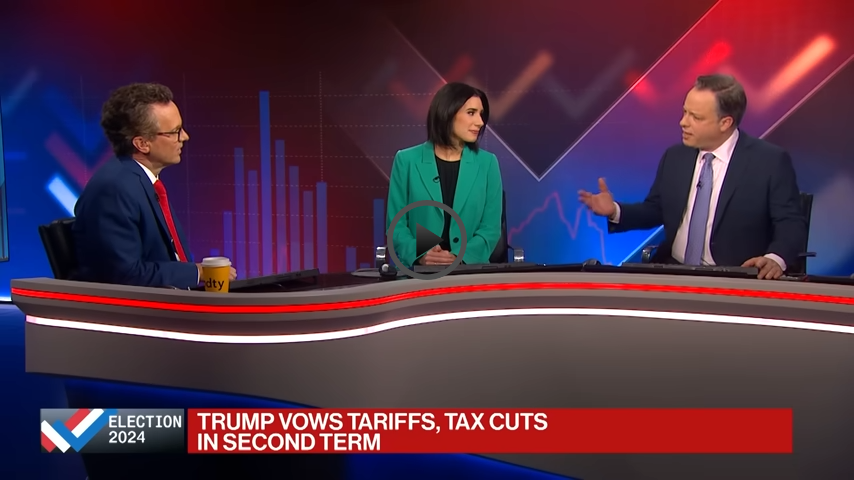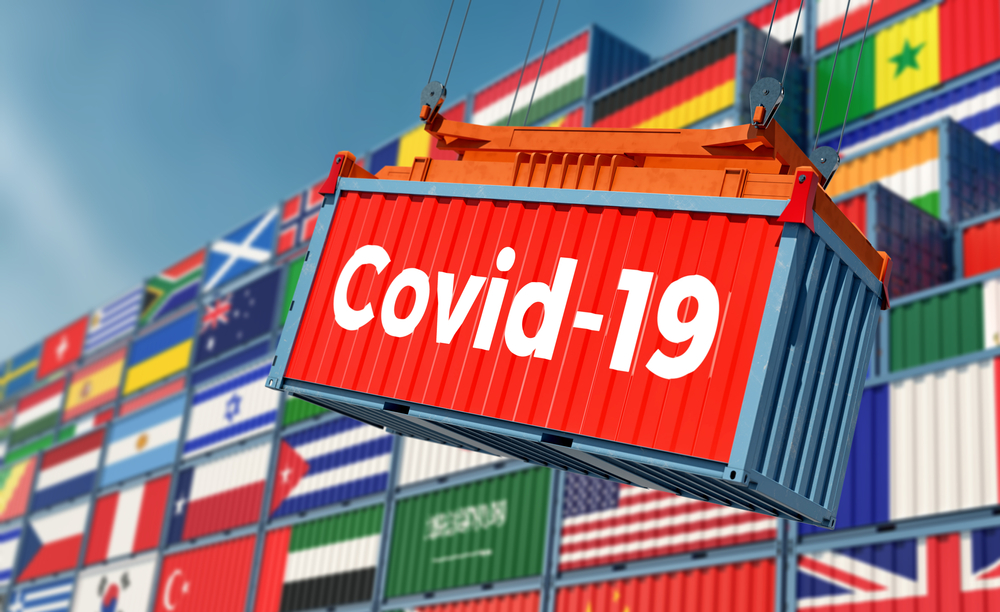Trump’s Tariffs: What Will Happen This 2025?

During his first term, President-elect Donald Trump imposed tariffs on steel, aluminum, and Chinese goods. As his second term approaches in January 2025, he has announced plans for new tariffs, raising concerns about the future of key economic drivers, such as global manufacturing, international trade, and supply chain management.
During his campaign, Trump proposed steep 60% tariffs on Chinese goods and broad, universal levies. However, his first post-election statement on tariffs revealed a shift, with plans to impose 25% duties on exports from Mexico and Canada and an additional 10% on Chinese products.
Why Trump is pushing for tariff increases
Trump’s push for higher tariffs marks a continuation of his economic agenda, which consists of the following:
-
Support U.S. manufacturing industries
Trump’s first round of tariffs aimed to safeguard U.S. businesses, especially in the manufacturing markets, where jobs have declined since their highest point in 1979. While some industries saw job growth, broader effects were felt as the Federal Reserve reported higher costs for imported raw materials and retaliatory tariffs. U.S. manufacturing jobs slightly dropped during his first term, though other factors likely contributed to the decline.
-
Attract global manufacturing companies to the U.S.
Trump believes broad-based tariffs could persuade foreign manufacturers to open plants in the U.S. to avoid import duties. However, experts argue that such a move could take years, as decisions on where to operate depend on factors like supply chains and labor policies. Some companies are already adjusting by shifting production, but outsourcing manufacturing may not necessarily benefit the U.S. in the long term.
-
Generate billions in additional federal revenue
For the new president, tariffs are a way to generate federal revenue, which could offset his proposed tax cuts. During Trump’s first term, tariffs reportedly brought in $80 billion, and a 10% tariff on all imports could generate $2 trillion from 2025 to 2034. However, experts note that the cost would largely fall on U.S. consumers and businesses, potentially adding $2,600 annually to a typical family’s expenses.
-
Curb the influx of drugs and unauthorized immigration
Trump views new tariffs as a strategy to curb illegal immigration and drug smuggling, particularly fentanyl from Mexico. While drug seizures have increased under President Biden, it’s uncertain whether threatening tariffs would reduce smuggling or immigration. Mexico has hinted at potential retaliation, framing the issue as a U.S. problem linked to domestic demand and public health, suggesting further negotiations could be needed.
How second-term tariffs could unfold
In 2018, Trump’s tariff policy altered the U.S. trade strategy, targeting steel, aluminum, and Chinese imports to reduce the trade deficit and protect sectors like industrial manufacturing. His second-term tariffs are expected to have a similar impact.
-
Spike in shipping and logistics expenses
In 2018, businesses rushed to import goods, leading to a spike in freight rates. With similar frontloading experienced in 2024, congestion at U.S. ports could drive up shipping and logistics costs, affecting manufacturing markets amid uncertainty.
-
Port congestion
This major issue during the 2018 tariff period may worsen as businesses rush to stockpile goods. Increased delays at major U.S. ports like Long Beach and Los Angeles could disrupt inventory management and heighten logistical challenges.
-
Overcrowded shipping channels
Trump's second-term tariffs could push companies to consider nearshoring, diverting freight to alternative shipping routes. This shift may lead to congestion on previously less-used paths, causing delays, higher shipping rates, and added strain on infrastructure, disrupting supply chains.
-
Supply chain expansion
With new tariffs on the horizon, U.S. companies are expected to continue outsourcing production to countries like Vietnam, Mexico, and India to avoid high import costs. While this shift offers cost benefits, it requires careful logistical planning and investment in alternative supply chains.
-
Trade disputes and countermeasures
Retaliatory tariffs from global trade partners, particularly China, could disrupt U.S. exports like agricultural products in response to Trump’s second-term tariffs. These trade tensions create unpredictable supply chains, highlighting the importance of future-ready strategies in global markets.
Mexico, a hidden bridge to China
As a result of Trump’s second-term tariffs, U.S. tariffs on China could see a substantial increase of 60 to 100%. While experts argue that the full hike may not be realistic, it is expected to have a considerable impact.
In response to these tariffs, China has often used Mexico as a backdoor to bypass U.S. tariffs, utilizing the U.S.-Mexico-Canada Agreement (USMCA). Chinese companies are setting up operations in Mexico to manufacture, assemble, or finalize products, benefiting from preferential tariff rates under the trade agreement.
However, this strategy has raised concerns about the future of U.S.-Mexico trade relations, particularly in industries such as the automotive market and electronics. The potential for tariff hikes could disrupt established trade flows, driving up costs and impacting supply chains across both countries.
The uncertainty around USMCA renegotiations and the threat of new tariffs has created anxiety among businesses, with some companies like Tesla already downsizing operations in Mexico.
Additionally, fluctuations in the Peso add to the trade volatility, affecting costs and long-term investment in manufacturing technologies and industries.

How to cope with Trump’s second-term tariffs
As Trump’s second-term tariffs approach, businesses across various industries must take proactive measures to minimize the impact. Here are key strategies to consider:
-
Diversify supply chains
To mitigate the risk of supply chain disruptions, businesses should source materials from multiple countries, particularly those that are not subject to the new tariffs. Nearshoring, or relocating production closer to domestic markets, can reduce the reliance on overseas shipping and lower exposure to tariff increases.
-
Optimize inventory management
Companies should consider strategic stockpiling of essential products or materials to safeguard against potential supply shortages. Adjusting inventory strategies, such as moving away from just-in-time practices, can help businesses remain agile and avoid stockouts during tariff-induced delays.
-
Enhance operational efficiency
Businesses should look to streamline their operations through process improvements and lean manufacturing. This can help lower production costs, making it easier to absorb the effects of higher tariffs. Additionally, investing in advanced manufacturing technologies allows for faster adjustments to changes in the market.
-
Engage in policy advocacy
Collaborating with trade associations and lobbying for policy adjustments can help industries mitigate the adverse effects of tariffs. By uniting efforts, companies can work together to influence policymakers and advocate for more favorable trade terms.
-
Explore alternative markets
Expanding into new markets and diversifying product offerings can help businesses reduce their dependence on tariff-hit regions, allowing them to offset losses and tap into growth opportunities elsewhere.
By implementing these strategies, businesses can better cope with the potential disruptions caused by Trump’s second-term tariffs, securing their long-term stability and growth.
As one of the Top 20 EMS companies in the world, IMI has over 40 years of experience in providing electronics manufacturing and technology solutions.
We are ready to support your business on a global scale.
Our proven technical expertise, worldwide reach, and vast experience in high-growth and emerging markets make us the ideal global manufacturing solutions partner.
Let's work together to build our future today.
Other Blog



